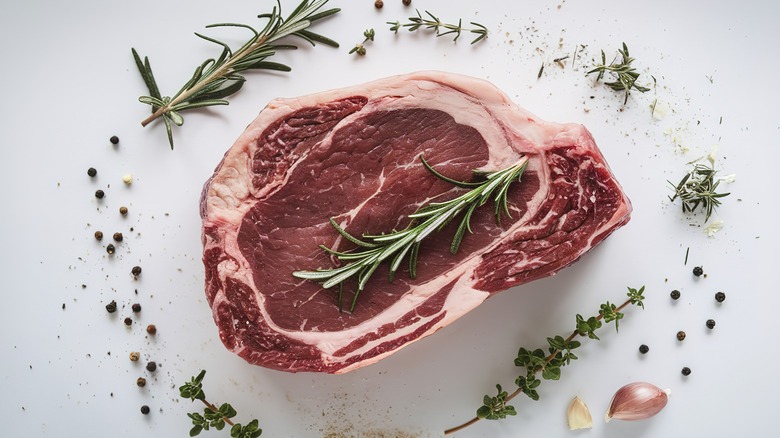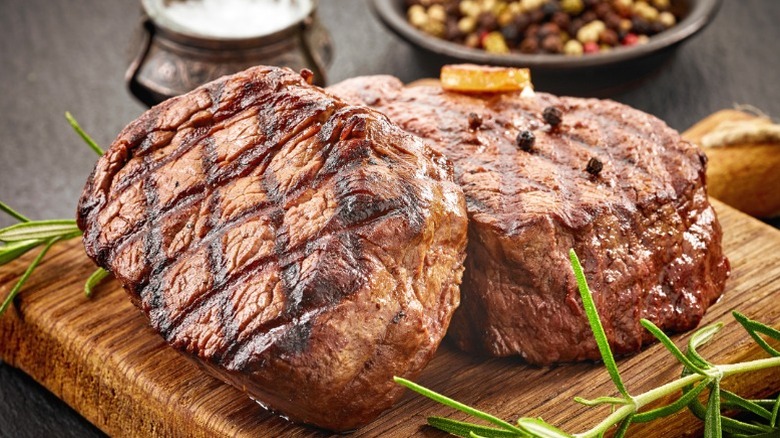The Seasoning Ratio You Need For Any Amount Of Steak
No matter how choice your cut of beef may be, every steak can benefit from some good seasoning. Whether you prefer to keep things simple with salt and pepper (the usage of which at the dinner table is a relatively recent development) or you'd rather apply some complex herbs and spice medley of your own, seasoning can turn a steak from good to great, and from great to transcendent. But how much seasoning are you supposed to apply to your steak? We asked Jim Primeau, the executive chef at Halls Chophouse in Summerville, South Carolina, and he gave us a handy ratio to use — although he cautioned that one size does not necessarily fit all.
"Unfortunately, there is no exact science on seasoning," Primeau says. "Some proteins will take more seasoning than others, but a good baseline rule would be 1 teaspoon of seasoning per pound of protein." Primeau favors simple S&P himself, and describes the seasoning process as such: "When seasoning one of our 16 oz. ribeye steaks, we would use 1 teaspoon of our salt and pepper mixture (which is 3 parts kosher salt to 1 part coarse ground black pepper). This ratio provides a thorough coating on both sides of the steak." Sometimes, that's really all you need.
Different cuts of steak require different seasoning approaches
Well, all of that information is good to know if you have a nice ribeye on your hands. But what if you're cooking with a different cut of beef, like a slim little flank steak for a stir fry or a big, brawny porterhouse? Executive chef Jim Primeau says that the cut of meat matters when it comes to seasoning. "Keep in mind that these [ribeye] steaks are roughly 1 inch thick, so they will take more seasoning than say a thin cut, such as a skirt steak or thinner smaller ribeye." How much — or how little — seasoning you use for these thinner cuts is left to your own discretion, but it shouldn't be too difficult to taper back from one teaspoon.
Likewise, if you're using a thicker cut of beef, don't be stingy with the seasoning. "On the other side of that theory, if you are serving a whole roasted tenderloin, which can get to 3-4 inches thick, you may want to season more aggressively, as there will be less surface area on the finished plated product." He also suggests that, once you slice your steak, "you may want to use a Fleur De Sel or other finishing salt to ensure that the center is also seasoned as well as the surface." Just be sure to slice the steak against the grain, and you'll be golden.

